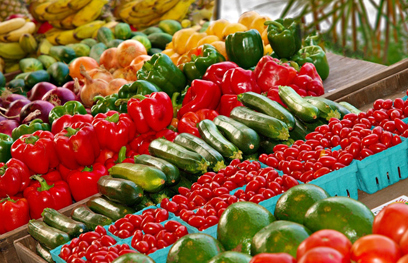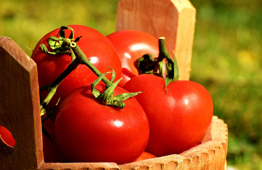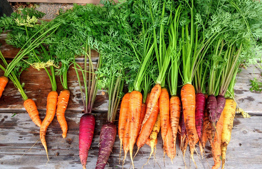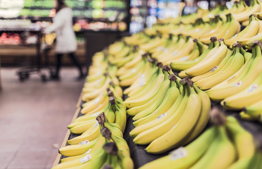Blooming Season for the Different Fruit and Harvest Time of Vegetables - 5781: Ma’aser Ani Calendars

When exactly is each type of produce subject to ma’aser ani? What are the blooming seasons, standard harvest datesand standard storage times for fruits and vegetables in israel today? An halachic-agricultural survey for 5781 to 5782
The year 5778 is the third year of the shemita cycle, so ma’aser ani is given instead of ma’aser sheni.[1]
The year 5779 is the forth year of the shemita cycle, so ma’aser sheni is given instead of ma’aser ani.
The year 5780 is the fifth year of the shemita cycle, so ma’aser sheni is given.
The year 5781 is the sixth year of the shemita cycle, so ma’aser ani is given instead of ma’aser sheni.
The year 5782 is Shemita year.
The fruits subject to ma’aser ani, for the most part, are those that bloom between 15 Shevat (Tu BiShevat) 5781 and 15 Shevat 5782. For the etrog, the determining date is the time of harvest, so the etrogim that are subject to ma’aser ani are the ones harvested between these two dates. As for other citrus fruits, there is a halachic doubt about the category they belong to. For this reason, a condition is made when separating terumot and ma’aserot as detailed below.
Vegetables are subject to ma’aser ani if harvested between 1 Tishrei (Rosh Hashana) 5781 and 1 Tishrei 5782. Grains and legumes are subject to ma’aser ani when the grain/pulse reaches a third of its growth between these dates.
To avoid making a mistake when separating terumot and ma’aserot, recite the formula established by Rav Kook as it appears on the magnet provided by Beit HaOtzar. In the section dealing with setting aside ma’aser sheni, we state that the produce is either ma’aser sheni or ma’aser ani, depending on the appropriate laws governing each fruit or vegetable. Since often we are not aware of the exact season and year in the shemita cycle each fruit and vegetable belongs to, we recommend regularly reciting this formula when taking terumot and ma’aserot, especially during the years 5780 and 5781.
1. Ma’aser Ani Calendar for Fruit
Most fruits bloom in the spring and summer, after Tu BiShevat. It follows that the fruits subject to ma’aser ani are those from the Spring/Summer 5781 harvest and the Fall/Winter 5782 harvest [=Shmita year], according to the standard harvest dates of each fruit (see the table below).
|
Fruit |
Blooming Season |
Standard Harvest Date |
|
Spring |
Summer 5781–Fall 5782 |
|
|
Spring |
Summer 5781 |
|
|
Spring |
Summer 5781–Winter 5782 |
|
|
Spring–summer |
Summer 5781 |
|
|
Spring–summer |
Fall 5782 |
|
|
Spring |
Winter 5782 |
|
|
Spring (when it becomes a small fruit) |
Summer 5781–Fall 5782 |
|
|
Spring |
Summer 5781–Fall 5782 |
|
|
Spring |
End of Spring 5781–Fall 5782 |
|
|
Spring |
End of Summer 5781–Fall 5782 |
|
|
Spring |
Summer 5781–Fall 5782 |
|
|
Spring–summer |
Summer 5781–Fall 5782 |
|
|
Spring |
Spring–Summer 5781 |
|
|
Summer (when they reach 1/3 of their growth) |
Fall 5782 |
|
|
Summer (when they reach 1/3 of their growth) |
Winter 5782 |
|
|
Spring |
Spring–Summer 5781 |
|
|
Spring |
Summer 5781 |
|
|
Spring |
Summer 5781–Winter 5782 |
|
|
Spring |
Fall 5782 |
|
|
Spring–summer |
End of Summer 5781–Fall 5782 |
|
|
Spring |
End of Summer 5781–Fall 5782 |
|
|
Spring–summer |
Summer 5781 |
|
|
Spring |
Summer 5781–Fall 5782 |
|
|
Spring |
Fall 5782 |
*There may be certain varieties or regions where they also bloom in the winter (see Section 2).
2. Ma’aser Ani Calendar for Fruit that Blooms in the Winter (around Tu BiShevat)
There are fruit that bloom around Tu BiShevat time. This means that these fruits are harvested in Spring–Summer of 5781, but some bloom before Tu BiShevat (and are subject to ma’aser sheni); and some bloom after Tu BiShevat (so they are subject to ma’aser ani). For this reason, it is important to use the conditional text when setting aside ma’aserot from these fruit in 5781 as described above. (While the table below includes the most common fruits available in the market, there may be special strains of other fruits that bloom in the winter).
|
Fruit |
Blooming Season |
Standard Harvest Date |
|
Winter |
Spring–Summer 5781 harvest |
|
|
Winter |
Spring–Summer 5781 harvest |
|
|
Winter–spring |
Spring–Summer 5781 harvest, (Fall 5782?) |
*According to rabbis who hold that the passionfruit vine is considered a tree.
3. Ma’aser Ani Calendar for Citrus Fruit
For citrus fruit, Their "Rosh Hashana" is Tu Bishvat. However, it is unclear whether their blooming date or harvest date is the determining factor for the new ma’aser year (with the exception of the etrog, where the harvest date determines its status). For this reason, there may be fruit subject to ma’aser ani even in Tu BiShevat 5781. Therefore, the conditional text should be used when taking ma’aserot from citrus fruit harvested from Tu BiShevat 5781 through the summer of 5782. Note that fruit in the marketplace may be sold after extended periods of refrigeration, so this conditional text should be used for fruit purchased in supermarkets and open markets through the end of 5782.
|
Fruit |
Blooming Season |
Standard Harvest Date |
|
Summer (generally) |
Harvested between Tu BiShevat 5781 and Tu BiShevat 5782 |
|
|
Summer–winter |
Separate ma’aser ani due to doubt for fruit harvested from Tu BiShevat 5781 through the 5782 harvest. |
|
|
All year round (primarily in summer and winter) |
Separate ma’aser ani due to doubt for fruit harvested from Tu BiShevat 5781 through the 5782 harvest (it is possible that produce of Summer 5782 is Kedushat Shevi'it). |
|
|
Spring–summer |
Separate ma’aser ani due to doubt for fruit harvested from Tu BiShevat 5781 through the 5782 harvest. |
|
|
Spring–summer |
Separate ma’aser ani due to doubt for fruit harvested from Tu BiShevat 5781 through the 5782 harvest. |
|
|
Spring–summer |
Separate ma’aser ani due to doubt for fruit harvested from Tu BiShevat 5781 through the 5782 harvest. |
4. Ma’aser Ani Calendar for Vegetables
Vegetables harvested between 1 Tishrei 5781 and 1 Tishrei 5782 are subject to ma’aser ani. Vegetables can be harvested at different times, depending on planting season, and all home-grown produce harvested between 1 Tishrei 5781 and 1 Tishrei 5782 is subject to ma’aser ani. As for commercially sold produce, modern vegetable growing techniques make it possible to cultivate many types of vegetables almost year round, while others can be refrigerated long-term, so it is hard to know which year these vegetables belong to. In the table below, vegetables with long-term storage time appear in bold. Some of these vegetables can appear on the market even a year after their harvest.
In any case, it is recommended to use the conditional text mentioned above each time one takes terumot and ma’aserot from both fruits and vegetables, whether store-bought or home-grown, especially during the years 5781 and 5782.
|
Vegetables |
Standard Harvest Date |
Standard Storage Time* |
|
Winter–spring |
Moderate |
|
|
Spring–summer |
Moderate |
|
|
Winter |
Short-term |
|
|
Spring |
Moderate |
|
|
Spring |
Long-term |
|
|
Most of the year |
Short-term |
|
|
Winter–spring |
Short-term |
|
|
Winter–spring |
Short-term |
|
|
Spring |
Short-to-moderate-term |
|
|
Winter–spring |
Short-term |
|
|
Most of the year |
Long-term (dehydrated onions) |
|
|
Spring–summer |
Short-term |
|
|
Most of the year |
Long-term |
|
|
Spring–summer |
Long-term |
|
|
Most of the year |
Moderate |
|
|
Winter–spring |
Short-term |
|
|
Spring–summer |
Short-term |
|
|
Summer–fall |
Long-term |
|
|
Spring–summer |
Short-term |
|
|
Spring–summer |
Short-term |
*Short-term storage: several weeks; moderate storage: several months; long-term storage: more than six months.
For all legumes (peas, hummus, etc.) and grains, the determining factor is that pulse/grain reaches a third of its growth. It follows that if the pulse reaches a third of its development between 1 Tishrei 5781 to 1 Tishrei 5782, it will be subject to ma’aser ani.
[1] Membership in Beit HaOtzar makes it possible to deliver ma’aser ani to its proper destination in the most mehudar fashion. Non-members need to ensure that ma’aser ani is given to a poor person during ma’aser ani years.




